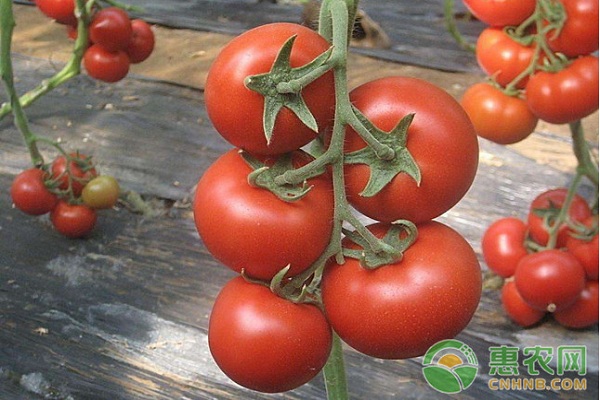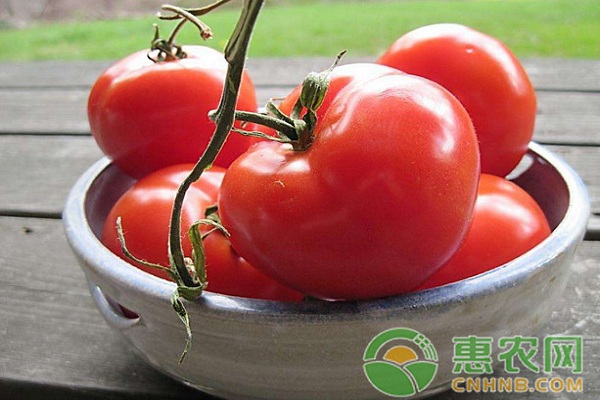How to carry out tomato dwarf planting in an artificially set environment facility? It’s all we have to say today. This technology is actually a simple and economical way of cultivation. The output can be increased by about 20%.

1, variety selection
Early-maturing varieties, such as “fine Xiabao†and “Chunyou Xiaqiubaoâ€, are more resistant to disease, with strong growth potential, high yield, beautiful fruit shape, bright surface, high hardness and good quality.
2, suitable sowing
It is suitable for planting in the region in mid-December and harvesting by the end of May. Premature sowing, the temperature is low before and after the Spring Festival, the planting does not go down, easy to cause small old seedlings; too late sowing is less effective.
3, cultivate strong seedlings
Formulated with sterile nutrient soil. Before seeding, the seeds should be disinfected and soaked. Prepare a nutrition box with a length, width and height of about 50 cm x 40 cm x 20 cm. Spread 3 to 4 cm of sterile nutrient soil evenly under the spray bottle. Spray a suitable amount of water with a watering can and sow seeds. Then cover 5mm of finely sifted fine soil in time, and compact it with wooden board. The amount of sand can be ensured on the sawdust. The temperature during the day before and after emergence should be controlled at 25~30°C and 20~12°C at night. After the seedlings, especially before the emergence of true leaves, the temperature should be properly lowered. During the day, it should be controlled at 20~12°C and 10~12°C at night to promote root development and prevent the above-ground part. The seedlings can be transplanted into the nutrient bowl by splitting the leaves and leaves. In the late growth stage of seedlings, the seedlings are prevented from growing, preventing low temperature and high humidity to control the occurrence of seedling diseases. In the seedling growth period, the application of phosphate fertilizer should increase the activity of invertase, so that the stems and leaves accumulate more sugar, enhance cold tolerance and promote flower bud differentiation. After the seedlings are planted, the ground temperature is raised, new roots are promoted, and the ventilation is reduced after the seedlings are warmed down. The temperature is lowered at around 20 °C during the day and 8-12 °C at night to keep the seedlings warmed before planting to increase the concentration of the cells and the leaves are thick. The internodes are short, the roots are developed, and the seedlings are strong.
4, colonization
The greenhouse was planted in the middle of March in the middle of March. 500 kg of high-quality mixed organic fertilizer applied to the mu, and 15 kg of diammonium to be used as the base fertilizer. Fine land preparation, made of 120 cm wide 畦, according to 40 cm wide open 3 grooves, ditch depth 12 cm, watering the ditch, for pulping. The plant spacing is 25x40 cm, and 6000 plants are planted in acre. Or use the improved mulch horizontal cultivation to make a flat raft with a width of 90cm, and then open two fixed sulcus according to 30~35cm wide, the depth of the ditch is 20cm, planted in the ditch at a plant spacing of 25cm, and the seedlings are placed in the direction of the reverse flow. Planting, planting water after filling the soil, and covering the whole membrane. In this way, under the support of alfalfa, the seedlings provide a warm microclimate to the seedlings, promote the early growth of the seedlings, and the density of 6000 to 6200 plants per mu, which is more than 200 strains. Strengthen scientific management. Temperature management: 5~6 days after planting, try to close the shed. The grass can be used at the northern end of the greenhouse, and the multi-layer cover in the shed can improve the temperature of the shed to promote slow seedling, gradually ventilate, adjust the temperature and humidity, 25 to 28 ° C during the day and 13 to 15 ° C at night. For the tomato with improved mulch horizontal cultivation, when the growth point of the seedling touches the plastic film, in order to prevent the high temperature burning seedling, the small blade is used to cut the "T" word in time to release the wind. After 3 to 4 days, the growth point of the seedlings was taken out of the membrane from the small eye. Then, the film is sunk to the bottom of the ditch, and the wind is sealed with the earth to form a sorghum ditch plant, which promotes the smooth growth of the seedling.
5. Management after planting.
1 seedling stage temperature and light fertilizer management
After the early spring tomato planting until the beginning of March, the weather is cold, and it is easy to encounter small snow and cloudy days. For this reason, water should be less watered. If the bottom is dry, the water will not be watered after the seedlings are raised, and the soil temperature will be increased to promote the root development of the plant. In case of fine weather, the cover should be exposed early to make the plants more visible. Carbon dioxide generators can be used to supplement carbon dioxide gas during sunny daylight hours. The planting temperature is 23-30 °C during the day and 12-15 °C during the night. The temperature can be appropriately lowered after the seedling is slowed down, but the minimum temperature should not be lower than 8 °C for a long time to prevent the "top cracking fruit". When planting, the hole can be fertilized, and the superphosphate, urea or compound fertilizer should be applied. Note that the seedlings should be more than 5 cm to avoid burning the seedlings.
2 Single dry pruning and two spikes are the key to high yield. After dense planting, the density of tomato should be increased. It should be singled and pruned. To harvest early and concentrated harvest, two spikes should be topped, leaving 3 to 4 per ear. In this way, tomato nutrition is fast and mature. Due to the dwarfing of the plants, the ventilation is ventilated, the light is good, and the occurrence of pests and diseases is small.
3 Beginning of the initial flowering period, gradually strengthen the ventilation after the slow seedling, 20 ~ 25 °C during the day and 13 ~ 15 °C during the night. Generally, after planting for about 10 days, the first inflorescence begins to bloom. Use anti-fallin or 2,4-D to paint or tomato-spotted flowers. Do not water during the flowering period to avoid falling flowers.

6, flower period management
Use hormones to protect flowers and promote early fruit ripening. First, using 15 ~ 20ppm of 2.4-D flower or 30~50ppm of tomato flowering in flowering period can significantly improve the fruit setting rate of tomato, and accelerate fruit growth and increase the yield in the early stage. The second is that when the first ear fruit reaches the white ripening stage, 40% ethephon is used to prepare the tomato tray with a 1:10 solution, which can be matured in 7 days and can ensure that the second ear fruit grows and is not affected, when the second ear After the fruit ripening period, the fruit is sprayed with 40% ethephon 50~60 times liquid, and the shed is filled with water to increase the temperature of the shed, which can promote the early precocity of the tomato.
When the first spike of walnut is the size, the first forced fertilizer is applied, 10~15 kg of urea per acre, 15~25 kg of nitrogen, phosphorus and potassium compound fertilizer, and then watered. During the period, the temperature should not be too high, 25 ~ 28 °C during the day and 15 ~ 17 °C during the night. When the minimum temperature is stable above 15 °C, it should be ventilated day and night. When removing the shed film, cover the sunshade net in time to prevent sunburn and physiological cracking. Strengthening the pruning, the main attack on the two ears of fruit cultivation is mainly cultivated by the method of high-yield and strong dwarfing of two spikes. Therefore, the plant side buds are removed in time after they grow. When a panicle is formed, the second ear fruit flower has been opened for about 7 days to top the heart. It is necessary to leave 2 leaves above the inflorescence, and timely fruit thinning, leaving 3 to 4 per ear, about 7 to 8 per plant. After the whole branch is taken, the consumption of nutrients in the plant is reduced, and more carbohydrates are transferred to the fruit to promote early fruit ripening.
7. Prevention and treatment of diseases
In recent years, the gray mold of tomato and late blight in greenhouse have been more common. It is necessary to use 50% per mus of apricot at 50g in the early flowering stage of the tomato to spray the smog, or use 50% keering WP 150 times. 75% of chlorothalonil WP 500 times, alternately sprayed or smoked every 15 days for 2 to 3 times. At the same time, the ventilation and ventilation are reduced, and the temperature is lowered and the moisture is discharged, which can effectively control the occurrence of diseases.
The above is the introduction of the characteristics of the planting techniques of tomato dwarfing and dense planting in the early spring protection area. The tomato dwarfing and planting cultivation is less than the general cultivation, but the number of plants and the average single fruit weight are more than the general planting. The pulling time is nearly one month ahead of schedule, the average wholesale price is 0.3~0.5 yuan per kilogram, and the per mu output value is about 2000 yuan. It can increase the farmers' economic income, and the harvest is concentrated. Due to early maturity, centralized listing, considerable economic benefits, the land Proper leisure and lodging are good.
Urostomy Bag,Ileal Conduit Bag,Urostomy Bag Covers,Urine Ostomy Bag
Wenzhou Celecare Medical Instruments Co.,Ltd , https://www.celecaremed.com